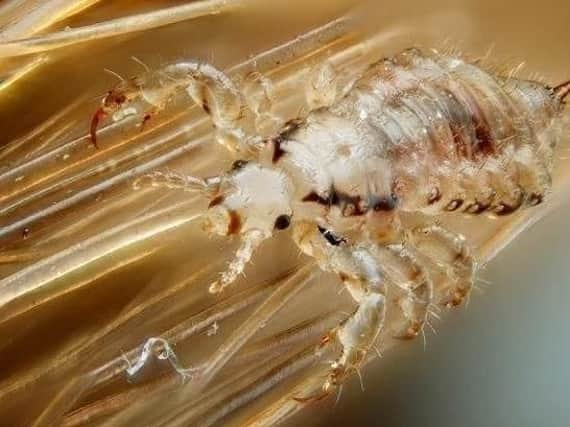Protect your family from summer-loving lice


The hair experts behind Hairtrade.com have issued a warning to British families as head lice season approaches, revealing advice in the prevention and treatment of nit infestations.
For many, having to regularly deal with head lice is part and parcel of being a parent as over half of all 11-14 year olds will get them each year.
Advertisement
Hide AdAdvertisement
Hide AdBut with the hot weather expected to continue throughout the rest of summer and perhaps even going in to autumn, some experts fear that this could be a bumper year for nit invasions.
Head lice are tiny, wingless insects that spend their entire lives on the human scalp, feeding greedily and exclusively on human blood.
Although in Europe these lice aren’t known to carry disease, an infestation can still be unpleasant – and even painful – to live with as they cause excessive itching and even infection.
And as each female louse can lay up to 10 eggs a day, the problem can soon get out of control.
Advertisement
Hide AdAdvertisement
Hide AdUnless they’re dealt with promptly, nits can go on to infest the heads of entire households, taking weeks or even months to treat.
A spokesperson for Hairtrade.com said: “The frequency of headlice always increases in the warmer months for a few of reasons.
“Firstly, lice love hot, humid places to nest and infest, and secondly, children tend to play together more in the warm weather, so there’s a greater chance for them to transmit lice from head to head.
“The rise of the ‘selfie culture’ has even been blamed, as it’s causing more young people to huddle together when taking pictures or showing each other the latest meme.
Advertisement
Hide AdAdvertisement
Hide Ad“Nits are able to lay more eggs and reproduce more rapidly in warm weather too, so cases of head lice are more common at this time of the year compared to the winter months.
“Control of head lice depends on prompt diagnosis and effective treatment which is responsibility of all parents. There are a few ways to try and prevent or ultimately treat head lice which are relatively easy and cost effective.
“Inspecting your children’s hair at least once a week throughout the school year for the presence of head lice is the first step.
“If you do find live lice, we would always recommend consulting a pharmacist for advice, but we have researched some treatments that are known to be quite effective which you could try too.
Advertisement
Hide AdAdvertisement
Hide Ad“And remember that if head lice are spotted, take a close look at all the family, including yourself, and ask close family and friends to check as well.”
How to treat head lice:
Combing
Using a proper detection comb – with teeth no more than 0.3mm apart – head lice can be trapped, picked out and killed by hand.
This is quite a lengthy process, particularly for those with long, thick hair, but is usually quite effective for detecting lice or if there are only a few lice to deal with.
If lice are present, it is recommended to comb the hair for an hour to an hour and a half daily or every other day for at least 14 days.
Advertisement
Hide AdAdvertisement
Hide AdWetting the hair with water and shampoo or conditioner will make it easier to glide the comb through the hair to catch lice and eggs.
Hot air
Devices blowing heated air onto the scalp can be quite effective at removing headlice – tests show up to 99% mortality of eggs and 88% mortality of hatched lice.
A standard home blow dryer can kill around 96% of eggs with proper technique.
The louse loses body moisture to the heated air, becomes desiccated and dies.
Advertisement
Hide AdAdvertisement
Hide AdThis should be repeated every 1-7 days until the natural life cycle of the lice is over (about four weeks).
Medication
Many medications can kill lice such as dimethicone. These medications are applied directly to the scalp and are around 70-97% effective.
Lotions appear to work better than those within a shampoo.
Tea tree oil
Tea tree oil is widely acknowledged and promoted as a treatment for head lice, though there is no clear evidence of its effectiveness, so it should not be used as a standalone treatment.
It is good to keep in the medicine cabinet though as it is 100% natural, soothing on the scalp, and acts as somewhat of a repellent.
Advertisement
Hide AdAdvertisement
Hide AdSo, while it’s not the best way to treat an active outbreak, it does work well as a deterrent.
Clean
After treatment, people are advised to wash all bedding and vacuum all areas the head lice have been such as car seats, coat hoods and sofas.
Although adult lice will die within two days without a blood meal, it’s best not to take the risk of one crawling back on to your head.